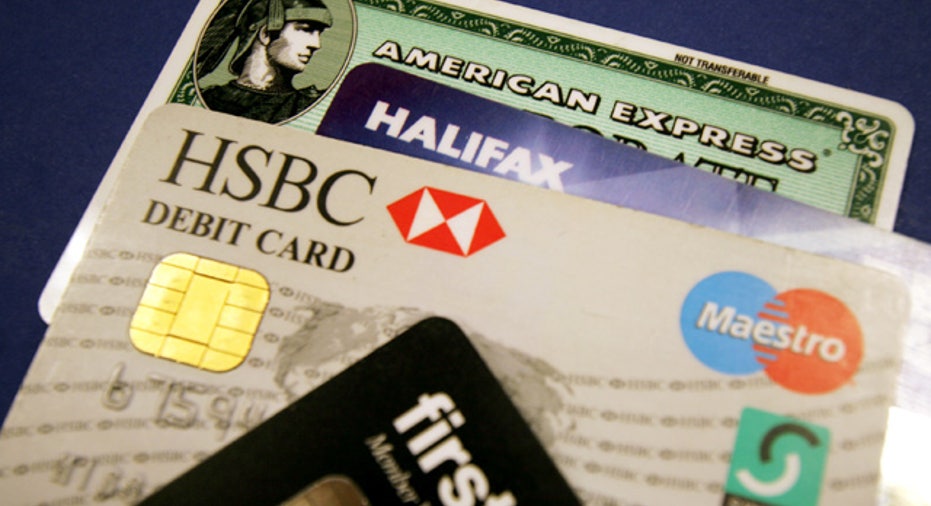Nine Low-Tech Ways to Manage Money and Credit

Smartphone apps, email banking alerts and cash-flow software can all help you manage your finances and live debt free. There are times, though, when decidedly old-fashioned tools are just as or even more efficient. Here are nine super-basic methods that technophiles and luddites alike can embrace.
--Pay per paycheck. Which bills you should pay with each incoming paycheck can be confusing. To retain order, list all your monthly expenses on a sheet of paper, suggests Kris Bickell of Cheshire, Conn., and founder of Debt-tips.com. Next to each line item, indicate which paycheck you'll use to pay them, such as the 1st, 15th or weekly. "Seeing which bills will be coming every month, along with the approximate date and approximate amount due, can help you visualize how your paychecks need to be used to pay your bills," says Bickell. "This way you can avoid late payments, missed payments and overspending."
--Write -- not type -- a budget. Until recently, credit counselors gave their clients worksheets with comprehensive spending and saving categories ready to fill in. While most agencies transitioned to online spreadsheets long ago, completing them by hand can be more effective. The process of writing down each current and proposed expenditure is more labor intensive than typing, which can force you slow down and carefully consider your spending habits -- thus creating a considerably more accurate budget.
--Track with a checkbook. Some days it seems the only people writing checks are those holding up the line at the supermarket. However, says Gabe Albanian, author of "Financial Swagger: The Essentials of Being Financially Savvy," they're also perfect for tracking cash flow. Withdraw your weekly discretionary spending sum from your checking account, and note the ending balance in your checkbook. Mark each purchase, subtracting each from the balance as you go. You'll always know how much is left in your account and your wallet, "which makes it easier to plan your daily activities according to how much money you still have," says Albanian.
--Carry cash only. What's one evolutionary step up from bartering or trading beads? Paying with government-issued greenbacks. It's the easiest, guaranteed way to ensure you'll always be in the black. "Technology is great, but not needed in many cases," says Mark Carruthers, a certified financial planner from Garnerville, N.Y. "Credit cards are too convenient and often result in bills that are 15% above what you would have paid with cash."
--Stick receipts on a spindle. If you're hanging onto receipts for tax and tracking purposes, you know how quickly these scraps can get out of hand. While scanning them into special software is au courant, skewering them is a time-tested accounting technique. "I use a spindle to corral my receipts until I get to them," says Jackie Beck, founder of the MoneyCrush personal finance blog. "I know I could have information automatically downloaded into Quicken, but I think it's useful to actually go through the receipts and review my spending."
--Save in person. Log off the Internet and walk into a bank, says Wayne Sanford, president of the credit consulting company New Start Financial, out of Allen, Texas. "Technology is a wonderful thing that makes our lives so much easier," says Sanford, but he also believes it desensitizes us to reality. So rather than having money automatically transferred to a savings account, physically go into your bank. Hold the money in your hand and pass it to the teller. It's an entirely different experience than online banking. More serious and real, contends Sanford, and that can reduce the chances you'll randomly withdraw from those funds.
--Become calculating. The handheld calculator may appear one evolutionary step above the abacus, but it's a powerful and transportable tool. "I love my financial calculator because it makes figuring out how much interest I'm earning or how much I would be paying if I were to take out a loan so easy," says Adam Williams, a Provo, Utah, financial planning evangelist and founder of RabbitFunds.com. In fact, he brought one with him to dealerships when car shopping: "I could run my own numbers and not rely just on what the sales rep was telling me."
--Stuff envelopes. To keep discretionary spending in line, Kelley Long, a personal financial coach and CPA from Chicago, recommends tucking cash away in expense-designated envelopes. Print on each what the money is for. When it's empty, stop spending. For example, "if your budget for dining out is $300, then put $300 in your dining-out envelope on the first of each month," says Long. "When the money runs out, you're eating in." Carry any remaining cash over for the next month, or apply it toward a debt payoff or savings goal.
--Fill a coin jar. Vessels harken back to the beginning of civilization, yet they're surprisingly effective for even the most modern of humans. Just wash a clear household container, label it with what you want the money designated for and dump in your daily pocket change. When full, exchange the coins for paper money at a bank to avoid unnecessary fees and enjoy the spoils. How much you can squirrel away in a single jar depends on its size and coin denominations, but go ahead and cheat with a little high-tech help and estimate with The Coin Jar Calculator.
Another advantage of all of these methods is that you don't have to invest a lot into new products to start saving money. You either have the items in your home or need nothing more than a fee-free habit change.